Home Remedies For Jaundice: 16 Effective Natural Treatments
Learn the easiest ways to manage the symptoms and recover from jaundice at home.

Image: iStock
Jaundice develops when there is an increase in the bilirubin levels in the blood. This can lead to a person developing yellow skin and eyes. Jaundice may be an underlying medical condition symptom and requires medical intervention to avoid further complications. You can also opt for some other traditional and holistic healing therapies like naturopathy, ayurveda, homeopathy, acupuncture, etc. This article explores the different natural and herbal remedies and therapies for jaundice management and a few tips to help you avoid it in the future. Read on.
In This Article
Best Home Remedies For Jaundice
1. Sunlight
Phototherapy is a widely used treatment to treat jaundice in infants.
However, data suggests exposure to sunlight is 6.5 times more effective than phototherapy while treating jaundice (1). It may be considered an alternative phototherapy source for the treatment of neonatal jaundice. However, more scientific studies are needed in this regard.
2. Sugarcane Juice
Sugarcane juice
has anti-inflammatory, analgesic, antihyperglycemic, diuretic, andhepatoprotectivei A medication that protects against liver damage. NAC, MgIG, PPC, bicyclol, and silymarin are some examples. effects (2). This may help in strengthening the liver, provide proper hydration, and also help in managing symptoms of jaundice.
You Will Need
1-2 glasses of sugarcane juice
What You Have To Do
Drink one to two glasses of sugarcane juice.
How Often You Should Do This
Consume this daily.
3. Essential Oils
a. Rosemary Essential Oil
Rosemary essential oil exhibits detoxifying and hepatoprotective effects
(3). Hence, it may be suitable for promoting liver health. However, since its effects on jaundice management are not well-studied, more research is required to substantiate the claims.
You Will Need
- 12 drops of rosemary oil
- 30 mL of any carrier oil (coconut or jojoba oil)
What You Have To Do
- Mix 12 drops of rosemary oil with 30 mL of any carrier oil.
- Apply this mixture topically to your abdomen and liver area and massage gently.
- Leave it on and allow it to be absorbed.
How Often You Should Do This
Do this once a day until you notice any visible improvement.
b. Lemon Essential Oil
Lemon essential oil is known for its protective action against liver injuries
(4). It also exhibits antioxidant properties (5). These properties of lemon essential oil may help in promoting liver health.
You Will Need
- 12 drops of lemon essential oil
- 30 mL of any carrier oil (coconut or olive oil)
What You Have To Do
- Add 12 drops of lemon essential oil to 30 ml of carrier oil of your choice.
- Mix well and apply it all over your abdomen and right above your liver area.
- Leave it on until it is completely absorbed.
How Often You Should Do This
Do this once a day.
4. Goat Milk
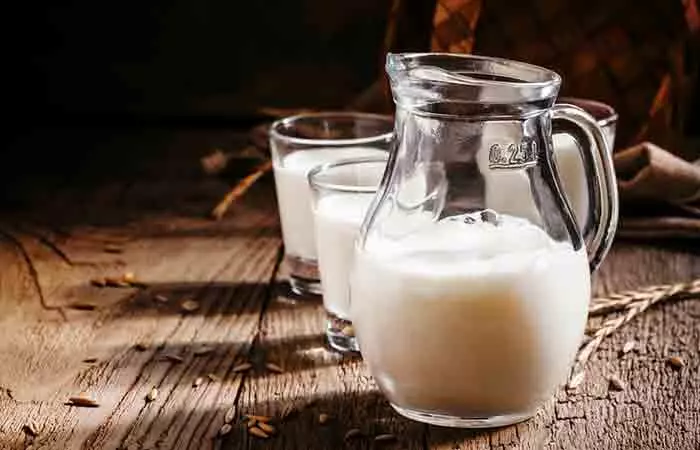
Goat milk is rich in many vital nutrients that are beneficial to both adults and infants (6). The antibodies in it may help manage jaundice symptoms to some extent. However, there isn’t enough scientific evidence to support this claim. Therefore, it’s best to consult a doctor before consuming milk.
You Will Need
1 cup of goat milk
What You Have To Do
Consume a cup of goat milk.
How Often You Should Do This
Consume this daily.
5. Green Grape Juice
Green grapes exhibit antioxidant properties and contain fiber (7). This may help ease digestion, prevent liver damage during metabolism, and help with jaundice management. However, more research is required to establish the link between grape juice consumption and liver health.
You Will Need
1 cup of green grape juice
What You Have To Do
- Consume a cup of green grape juice.
- You can feed infants with the juice extracted from two to three grapes.
How Often You Should Do This
Do this daily.
6. Garlic
The allicin in garlic exhibits strong antioxidant properties (8). It may help in detoxifying the liver, speeding up the recovery from jaundice. However, evidence regarding the effect of garlic on liver health is lacking. Therefore, more research is warranted to prove these claims.
You Will Need
3-4 cloves of minced garlic
What You Have To Do
- Add a few cloves of minced garlic to your daily diet.
- Alternatively, you can also chew on the garlic cloves directly.
How Often You Should Do This
Do this daily.
7. Ginger
Ginger possesses powerful antioxidant and hypolipidemici A diverse array of medications that are used to reduce blood levels of lipids and lipoproteins, such as cholesterol. properties A study found that it might help reduce inflammation associated with Non-Alcoholic Fatty Liver Disease (9). This indicates its potential for preventing liver inflammation and promoting its health. However, more studies are warranted in this regard.
You Will Need
- 1-2 inches of minced garlic
- 1 cup of water
What You Have To Do
- Add an inch or two of ginger to a cup of water.
- Bring it to a boil in a saucepan.
- Allow it to steep for 5 minutes and strain.
- Consume it while it is warm.
- You can also add ginger to your daily diet as an alternative.
How Often You Should Do This
Do this daily.
8. Lemon Juice
Animal studies found that the antioxidants in lemon juice may have hepatoprotective effects (4). While there isn’t enough evidence regarding its effects on jaundice management, the antioxidants in lemon may help manage liver health, which might help manage jaundice symptoms. However, more research is required in this regard.
You Will Need
- ½ lemon
- 1 glass of water
- Honey
What You Have To Do
- Add the juice from half a lemon to a glass of water.
- Mix well and add some honey to it.
- Drink the lemon juice immediately.
How Often You Should Do This
Drink this 3-4 times a day.
 Quick Tip
Quick Tip9. Vitamin D
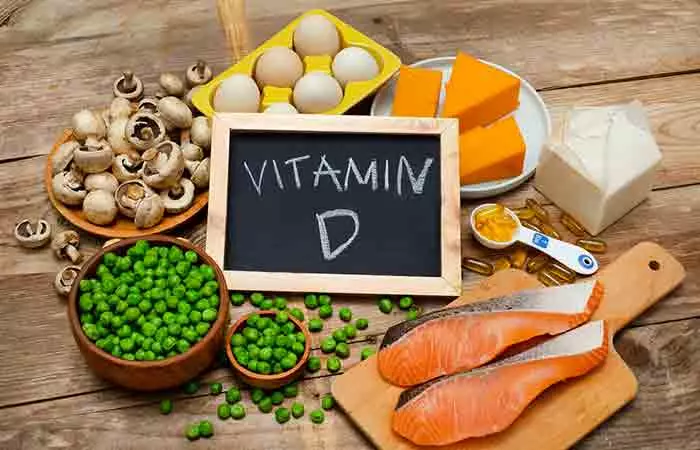
Since newborn infants are hardly exposed to the sun, they are often deficient in vitamin D. According to a study published in the Journal of the Chinese Medical Association, jaundiced infants were observed to be deficient in vitamin D as compared to non-jaundiced infants (10).
Breastfed infants need up to 400 IU of vitamin D daily. They can be given drops of this vitamin, or the breastfeeding mother can consume more vitamin D-rich foods like eggs, cheese, and fish. Adults can also benefit from this remedy if they are deficient in vitamin D.
10. Yogurt
Probiotic yogurt may help bring down the serum bilirubin levels by regulating bacterial colonies in the body (11). Infants may also benefit from probiotic supplementation. Hence, breastfeeding mothers may increase their intake of probiotic yogurt to aid the recovery of their babies.
You Will Need
1 bowl of plain probiotic yogurt
What You Have To Do
Consume a bowl of plain probiotic yogurt daily.
How Often You Should Do This
Do this daily.
11. Tomatoes
Tomatoes contain a compound called lycopene (12). Lycopene is a strong antioxidant and animal studies found that it may help in the detoxification of the liver (13).
You Will Need
- 2-3 tomatoes
- 1 cup of water
What You Have To Do
- Boil the tomatoes in a saucepan.
- Strain the mixture and remove the tomato skin.
- Mix the boiled tomatoes with the collected water.
- Drink this juice.
How Often You Should Do This
Do this once every day for a couple of weeks.
12. Amla
Amla is rich in vitamin C and many other nutrients (14). It has been used in Ayurveda for managing jaundice as its potent antioxidants help keep the liver healthy (15).
You Will Need
- 2-3 amlas (Indian gooseberries)
- 1 cup of water
- Honey
What You Have To Do
- Boil the amlas in a saucepan.
- Mix the amla pulp with the remaining water.
- Once the mixture cools down, add some honey to it and consume it.
How Often You Should Do This
Do this 2-3 times a day.
13. Barley Water
Barley exhibits diuretic and antioxidant properties (16). These properties may help in flushing out toxins as well as bilirubin through urine. Moreover, animal studies found that it may help enhance liver function, thereby reducing the risk of associated conditions, including jaundice (17).
You Will Need
- 1 teaspoon of roasted barley seed powder
- 1 glass of water
- 1 teaspoon of honey
What You Have To Do
- Add a teaspoon of roasted barley seed powder to a glass of water and mix well.
- Add a teaspoon of honey to this and drink the mixture immediately.
How Often You Should Do This
Do this daily.
14. Holy Basil
Basil (Ocimum sanctum) exhibits hepatoprotective activities (18). This property may be beneficial for the liver and may enhance its function.
You Will Need
A few holy basil leaves
What You Have To Do
- Chew on a few holy basil leaves (10 to 12).
- If the flavor is too strong for you, grind the leaves and add the paste to your favorite juice.
How Often You Should Do This
Do this 3 times a day.
15. Oregano
Oregano contains tocopherol and other powerful antioxidants (19). These antioxidants may help reduce oxidative stress, which is crucial for maintaining live health Therefore, it might help in managing liver-related issues like jaundice. However, more studies are required to support these claims.
You Will Need
- 1-2 teaspoons of oregano
- 1 cup of water
What You Have To Do
- Add one to two teaspoons of oregano leaves to a cup of water.
- Bring it to a boil in a saucepan.
- Simmer for 5 minutes and strain.
- Once the tea cools down a little, drink it immediately.
- You can also add some honey to the tea for added flavor.
How Often You Should Do This
Do this 3 times a day.
16. Papaya
Papaya leaves have been used in fold medicine for ages to treat jaundice (20). The leaves are rich sources of enzymes, like papain and chymopapain (21). These enzymes may support digestive health and treat liver problems.
You Will Need
- Papaya leaves
- Honey
What You Have To Do
- Grind the papaya leaves to form a paste.
- Strain this mixture to obtain the juice.
- Mix half a tablespoon of this juice and a tablespoon of honey.
- Drink this mixture.
How Often You Should Do This
Do this 2-3 times a day.
Note: While these home remedies may provide relief, they cannot replace medical treatment. So, always see a healthcare provider when dealing with severe medical conditions like jaundice. Early medical intervention will help prevent potential complications associated with jaundice.
Apart from these remedies, there are a few other tips you can follow to prevent jaundice. They are listed below.
Key Takeaways
- Jaundice is caused due to increase in levels of bilirubin and involves yellowing of skin, weakness, and loss of appetite
- Some of the most effective home remedies to treat jaundice include increasing fluid uptake, sunbathing, and massaging the abdomen with essential oils, as they have hepatoprotective effects.
- Consuming papaya leaves, grapes, tomatoes, amla, and lemon juice helps treat jaundice as they have antioxidant properties.
Prevention Tips
- Maintain a healthy weight and exercise daily.
- Avoid drinking alcohol.
- Manage your cholesterol levels.
- Maintain hygiene.
- Drink clean and boiled water and eat fresh food.
 Quick Tip
Quick TipGiven below are some foods that may further aggravate your condition and must be avoided.
Foods To Avoid
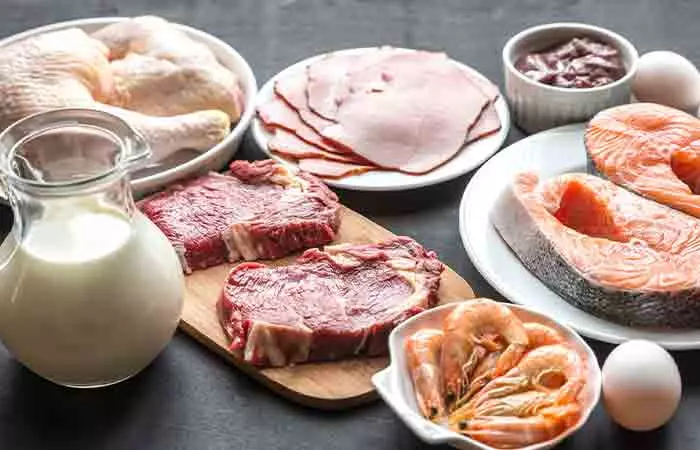
Avoid these foods if you have jaundice:
- Sugar
- Meat
- Dairy products
- Salt
These foods are quite hard to digest and end up aggravating the condition. Hence, steer clear of them to facilitate faster recovery from jaundice.
Let us now look at the leading causes of jaundice in both adults and newborns.
Causes And Risk Factors For Jaundice
Jaundice occurs due to excess bilirubin in the body in both adults and infants. Bilirubin is a waste product that is produced as a result of the breakdown of your red blood cells. This compound is broken down and excreted through the stools (22).
Prior to birth, babies have a different form of hemoglobin that starts to break down rapidly after they are born. This generates high levels of bilirubin that need to be excreted from their body.
An underdeveloped liver cannot excrete bilirubin as fast as it is being produced, and hence, this might result in hyperbilirubinemia and jaundice in infants (23).
Other causes and risk factors for jaundice in infants are (23):
- Breastfeeding jaundice that occurs when the baby is not fed well in the first week of life.
- Breast milk jaundice that occurs when certain compounds in breast milk interfere with the breakdown of bilirubin.
- Medical conditions like sickle cell anemia, liver disease, and sepsis.
- Premature birth
- Bruising during birth
- Blood group incompatibility between the mother and the infant. Pris, a blogger, shared her newborn infant’s journey with jaundice. He was diagnosed soon after his birth with a high level of jaundice that increased after consuming breast milk. She writes, “My doctor was perturbed as to why the level increased with breastmilk. They came up with some explanations ranging from breastmilk being harder for baby to digest compared to formula milk to hubby having a different blood group from me, so baby might have a blood group that would have to “fight” the antibodies from 2 different blood groups, resulting in a higher jaundice level (i).”
The causes and risk factors for jaundice or high bilirubin levels in adults are (22):
- Medical conditions like malaria, sickle cell anemia, cirrhosisi A severe form of liver disease when good liver tissue is permanently damaged and replaced by scar tissue. , cancer, gallstones, and autoimmune disorders.
- Certain medications
- Parasites like liver flukes
- Exposure to different types of viral hepatitis
- Hereditary conditions
- Alcohol consumption
The following are some of the signs and symptoms that surface with jaundice in adults and infants.
What Are The Signs And Symptoms Of Jaundice?

The signs and symptoms of jaundice include (22):
- Pale stool
- Dark urine
- Itchy skin
- Vomiting
- Nausea
- Bleeding (in the rectum)
- Diarrhea
- Chills
- Fever
- Loss of appetite
- Weakness
- Weight loss
- Abdominal pains and headaches
- Swelling (legs and abdomen)
The signs of jaundice in infants include (23):
- Drowsiness
- Poor feeding
- Pale stools
- Dark urine
- Yellow abdomen and limbs
- Weakness
- Inability to put on weight
- Irritability
Jaundice may be divided into three major types, depending on its cause.
Types Of Jaundice
- Pre-Hepatic Jaundice: This type of jaundice results from an excessive breakdown of red blood cells, which overwhelms the liver’s ability to metabolize bilirubin (22).
- Hepatocellular Jaundice: When your liver loses its ability to metabolize bilirubin, it results in hepatocellular jaundice. This type is often a result of liver dysfunction (22).
- Post-Hepatic Jaundice: When there is an obstruction in the drainage of bilirubin from your body, it results in post-hepatic jaundice (22).
Let’s now take a look at the levels of bilirubin in adults and infants that determine the onset of jaundice.
Jaundice Level Chart

The most common way of testing the bilirubin levels is through a blood test, though an amniotic fluid test and a urine test can also give reliable results. The test measures the levels of both conjugated and unconjugated bilirubin.
The normal bilirubin levels in adults range from 0.2 mg/dL to 1.2 mg/dL. Any levels above this are considered high, and the individual has an increased risk of developing jaundice.
Newborns should not have bilirubin levels above 5 mg/dL. Infants whose bilirubin levels rise above this level after a few days of birth are also at the risk of developing jaundice.
Pris shared that her son’s jaundice level was 18.5 which fell to 18 after formula feed and phototherapy. However, the level increased to 19.5 after he fed on breastmilk. She mentioned, “After one day of formula feed and phototherapy, the jaundice level fell to 18. However, this level was still too high for him to be discharged, so stay another day we had to (i).”
As per this report, jaundice is more commonly seen in newborns and the elderly. In newborns, around 20% may develop jaundice due to an immature liver function. Among children, hepatitis A is the primary cause of jaundice, whereas, in elders, it is either due to bile duct block or liver damage.
High bilirubin levels are not favored, and they must be kept in check to avoid health complications that may lead to jaundice.
Consult a doctor as soon as symptoms arise as jaundice can be a presentation of many severe diseases like hepatitis, liver failure, and certain hematological conditions.
Jaundice may take an ugly turn if the treatment is delayed for too long. Hence, it is best to start treatment while also following these remedies. Let us find out more about it in the next section.
Medical Treatment For Jaundice
Clinical treatment for jaundice depends on its underlying cause and is different for adults and children. For instance, for jaundice-induced pruritus, cholestyramine is often prescribed by doctors as the first line of treatment. They may also prescribe rifampicin, naltrexone, and sertraline as the second, third, and fourth line of treatment, respectively (24). However, you should avoid consuming these drugs on your own.
In case of infants, the doctor may use conventional phototherapy or exchange transfusion for treatment, depending on the severity of neonatal jaundice (25).
Infographic: 5 Home Remedies To Treat Jaundice
Jaundice can be dangerous to one’s health, and recovery can take weeks. Relying solely on medication during your illness may not be the best option. Because jaundice affects your liver and metabolism, you need nutrition rest to help your body heal over time. Certain remedies, in addition to medications, can aid in your treatment. We have listed the same in the infographic below. Scroll down to check.
Some thing wrong with infographic shortcode. please verify shortcode syntax
Jaundice is a medical condition in which there is an excess of bilirubin, a waste product, in the blood. Both adults and infants can get jaundice, albeit for different reasons. However, in either case, jaundice, if left untreated, can lead to severe complications as it generally is an indication of underlying health conditions. Some common signs of jaundice include yellowing of skin and eyes, pale stool, dark urine, weakness, and inability to gain weight or weight loss. While medical treatment is essential for this condition, you may follow some home remedies to manage jaundice, such as exposure to sunlight, consuming natural foods for a healthy liver like papaya, tomatoes, sugarcane juice, barley water, and the application of specific essential oils.
Frequently Asked Questions
How long does it take for jaundice to resolve?
The number of days jaundice may take to resolve depends on several factors, such as treatment, severity, and underlying causes. Generally, the symptoms of mild jaundice may resolve within two to three weeks in adults.
How long does jaundice last in babies?
Jaundice in babies, especially breast milk jaundice, may last anywhere from 3 to 12 weeks.
Why are babies born with jaundice?
Babies develop jaundice when the bilirubin levels in their bodies are more than the kidneys can flush out. High bilirubin could be a result of the rapid breakdown of red blood cells.
What are the best foods for jaundice patients?
A diet that includes fresh fruits, vegetables, fish, whole grains, and nuts may be great for those with jaundice.
How long should your baby be exposed to the sun to treat jaundice?
For treating jaundice in your baby, you may expose him/her to sunlight through a closed glass window for about 15 minutes, four times daily.
Is banana good for jaundice?
No, bananas are not recommended for individuals with jaundice. Bananas, especially when consumed with milk, may increase bilirubin levels in the body, which is counterproductive during jaundice (26).
Can vitamin B12 deficiency cause jaundice?
Yes, long-term jaundice may be a result of a vitamin B12 deficiency. However, it is rare (27).
Is jaundice an emergency?
Yes, jaundice is an emergency and should be treated by a professional healthcare provider right away.
What turns yellow first with jaundice?
Generally, the white of the eyes is the first part to turn yellow with jaundice.
Illustration: Home Remedies To Treat Jaundice + Prevention And What To Eat
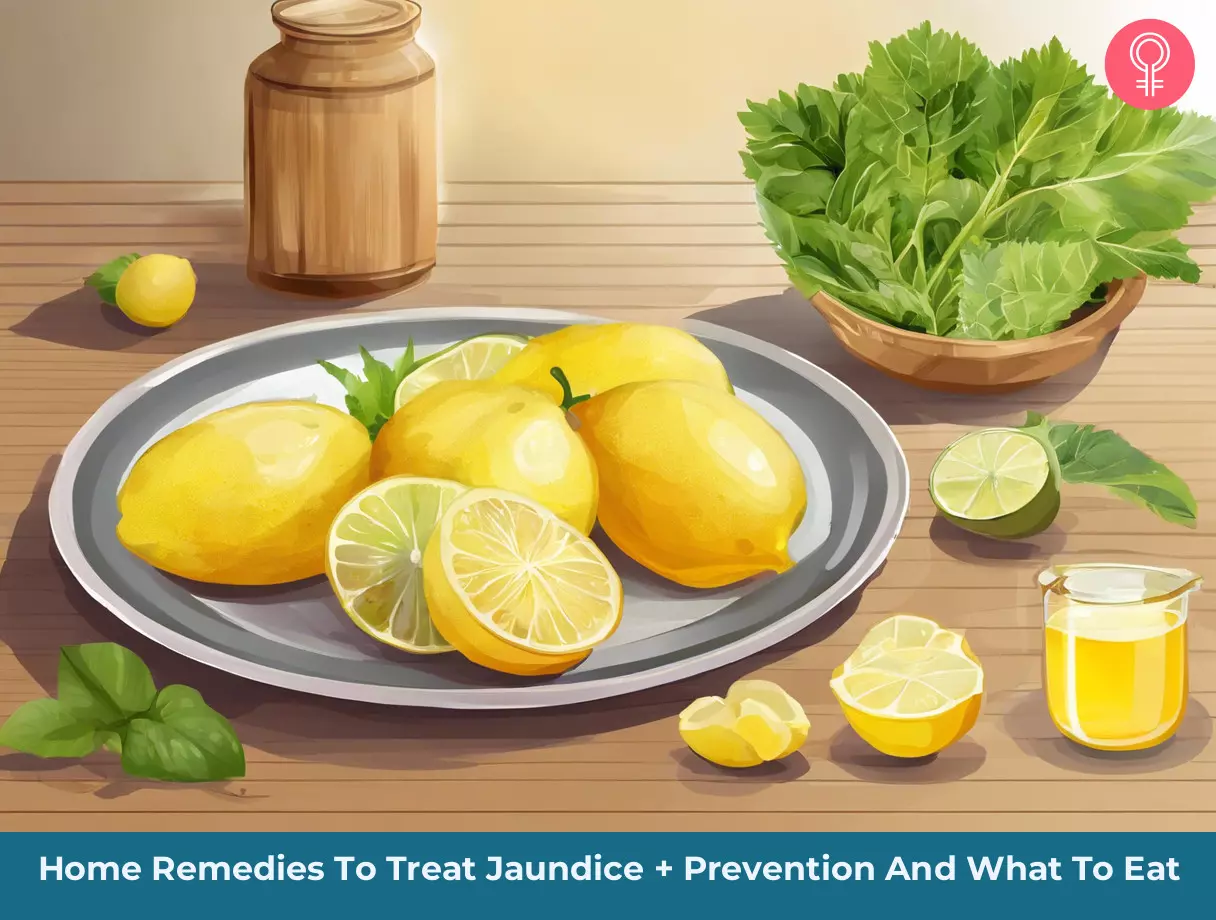
Image: Stable Diffusion/StyleCraze Design Team
References
Articles on StyleCraze are backed by verified information from peer-reviewed and academic research papers, reputed organizations, research institutions, and medical associations to ensure accuracy and relevance. Read our editorial policy to learn more.
- Salih, Fadhil M. “Can sunlight replace phototherapy units in the treatment of neonatal jaundice? An in vitro study.” Photodermatology, photoimmunology & photomedicine 17.6 (2001): 272-277.
https://pubmed.ncbi.nlm.nih.gov/11722753/ - Singh, Amandeep, et al. “Phytochemical profile of sugarcane and its potential health aspects.” Pharmacognosy reviews 9.17 (2015): 45.
https://www.ncbi.nlm.nih.gov/pmc/articles/PMC4441162/ - Rašković, Aleksandar, et al. “Antioxidant activity of rosemary (Rosmarinus officinalis L.) essential oil and its hepatoprotective potential.” BMC complementary and alternative medicine 14.1 (2014): 225.
https://pubmed.ncbi.nlm.nih.gov/25002023/ - Zhou, Tong, et al. “Protective effects of lemon juice on alcohol-induced liver injury in mice.” BioMed research international 2017 (2017).
https://www.ncbi.nlm.nih.gov/pmc/articles/PMC5439254/ - Hsouna, Anis Ben, et al. “Citrus lemon essential oil: chemical composition, antioxidant and antimicrobial activities with its preservative effect against Listeria monocytogenes inoculated in minced beef meat.” Lipids in health and disease 16.1 (2017): 146.
https://lipidworld.biomedcentral.com/articles/10.1186/s12944-017-0487-5 - Park, Y. W. “Hypo-allergenic and therapeutic significance of goat milk.” Small Ruminant Research 14.2 (1994): 151-159.
https://www.sciencedirect.com/science/article/abs/pii/0921448894901058 - Kanner, Joseph, et al. “Natural antioxidants in grapes and wines.” Journal of Agricultural and Food Chemistry 42.1 (1994): 64-69.
https://pubs.acs.org/doi/abs/10.1021/jf00037a010# - Chung, Lip Yong. “The antioxidant properties of garlic compounds: allyl cysteine, alliin, allicin, and allyl disulfide.” Journal of medicinal food 9.2 (2006): 205-213.
https://pubmed.ncbi.nlm.nih.gov/16822206/ - Rahimlou, Mehran, et al. “Ginger supplementation in nonalcoholic fatty liver disease: a randomized, double-blind, placebo-controlled pilot study.” Hepatitis monthly 16.1 (2016).
https://www.ncbi.nlm.nih.gov/pmc/articles/PMC4834197/ - Aletayeb, Seyyed Mohammad Hassan, et al. “Comparison between maternal and neonatal serum vitamin D levels in term jaundiced and nonjaundiced cases.” Journal of the Chinese Medical Association 79.11 (2016): 614-617.
https://pubmed.ncbi.nlm.nih.gov/27633666/ - Chen, Zhe, et al. “Probiotics supplementation therapy for pathological neonatal jaundice: a systematic review and meta-analysis.” Frontiers in pharmacology 8 (2017): 432.
https://www.ncbi.nlm.nih.gov/pmc/articles/PMC5491971/ - Rao, A. V., Zeeshan Waseem, and Sanjiv Agarwal. “Lycopene content of tomatoes and tomato products and their contribution to dietary lycopene.” Food Research International 31.10 (1998): 737-741.
https://www.sciencedirect.com/science/article/abs/pii/S0963996999000538 - Aydın, Sevtap, et al. “Antioxidant and antigenotoxic effects of lycopene in obstructive jaundice.” journal of surgical research 182.2 (2013): 285-295.
https://pubmed.ncbi.nlm.nih.gov/23154037/ - Mirunalini, S., and M. Krishnaveni. “Therapeutic potential of Phyllanthus emblica (amla): the ayurvedic wonder.” Journal of basic and clinical physiology and pharmacology 21.1 (2010): 93-105.
https://pubmed.ncbi.nlm.nih.gov/20506691/ - Dasaroju, Swetha, and Krishna Mohan Gottumukkala. “Current trends in the research of Emblica officinalis (Amla): A pharmacological perspective.” Int J Pharm Sci Rev Res 24.2 (2014): 150-9.
https://www.semanticscholar.org/paper/Current-Trends-in-the-Research-of-Emblica-%28Amla%29%3A-A-Dasaroju-Gottumukkala/15b165c634fc82d9186ab98700769a4ce01ef23a?p2df - Sharma, Paras, Hardeep Singh Gujral, and Baljeet Singh. “Antioxidant activity of barley as affected by extrusion cooking.” Food Chemistry 131.4 (2012): 1406-1413.
https://www.sciencedirect.com/science/article/pii/S0308814611014415 - Panahandeh, Gholamreza, et al. “Phytotherapy with hordeum vulgare: A randomized controlled trial on infants with jaundice.” Journal of clinical and diagnostic research: JCDR 11.3 (2017): SC16.
https://www.ncbi.nlm.nih.gov/pmc/articles/PMC5427399/ - Lahon, Kingshuk, and Swarnamoni Das. “Hepatoprotective activity of Ocimum sanctum alcoholic leaf extract against paracetamol-induced liver damage in Albino rats.” Pharmacognosy research 3.1 (2011): 13.
https://pubmed.ncbi.nlm.nih.gov/21731390/ - Lagouri, Vasiliki, and Dimitrios Boskou. “Nutrient antioxidants in oregano.” International journal of food sciences and nutrition 47.6 (1996): 493-497.
https://pubmed.ncbi.nlm.nih.gov/8933203/ - Anjum, Varisha, et al. “Antithrombocytopenic and immunomodulatory potential of metabolically characterized aqueous extract of Carica papaya leaves.” Pharmaceutical biology 55.1 (2017): 2043-2056.
https://www.tandfonline.com/doi/full/10.1080/13880209.2017.1346690 - Chávez-Quintal P, González-Flores T, Rodríguez-Buenfil I, Gallegos-Tintoré S. Antifungal Activity in Ethanolic Extracts of Carica papaya L. cv. Maradol Leaves and Seeds. Indian J Microbiol. 2011;51(1):54–60.
https://www.ncbi.nlm.nih.gov/pmc/articles/PMC3209867/ - Abel Joseph, Hrishikesh Samant, Jaundice. August 8, 2025.
https://www.ncbi.nlm.nih.gov/books/NBK544252/ - Betty Ansong-Assoku, Sanket D. Shah, Mohammad Adnan, Pratibha A. Ankola, Neonatal jaundice. February 12, 2025.
https://www.ncbi.nlm.nih.gov/books/NBK532930/ - Ramez Bassari, Jonathan B Koea, Jaundice associated pruritis: A review of pathophysiology and treatment. World J Gastroenterol. 2015 Feb 7; 21(5): 1404–1413.
https://www.ncbi.nlm.nih.gov/pmc/articles/PMC4316083/ - ASL Wan, S Mat Daud, Management of neonatal jaundice in primary care. Malays Fam Physician. 2016; 11(2-3): 16–19.
https://www.ncbi.nlm.nih.gov/pmc/articles/PMC5408871/ - K S, Sudhakar, Bhat K S. Toxicological evaluation of banana and milk combination as incompatible diet – An experimental exploration of Samyoga viruddha concept. J Ayurveda Integr Med. 2025 Jul-Sep;12(3):427-434
https://www.ncbi.nlm.nih.gov/pmc/articles/PMC8377192/ - Katakam PK, Hegde AP, Venkataramaiahyappa M. Vitamin B12 deficiency: unusual cause of jaundice in an adolescent. BMJ Case Rep. 2018 Jan 12;2018:bcr2017222302
https://www.ncbi.nlm.nih.gov/pmc/articles/PMC5780596/
Read full bio of Dr. Bhakti Kapse
Read full bio of Sucharita Mishra
Read full bio of Ravi Teja Tadimalla
Read full bio of Dipti Sharma













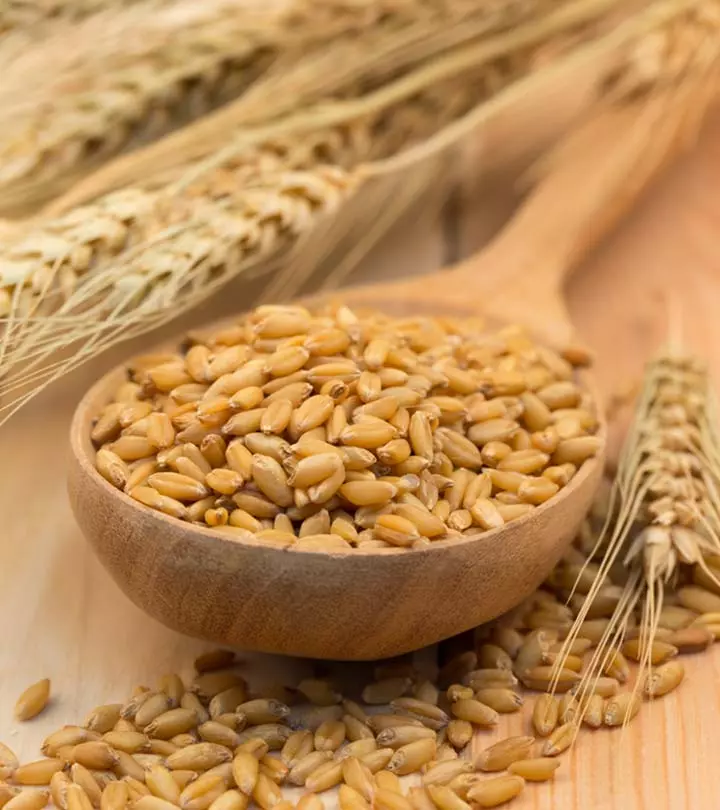



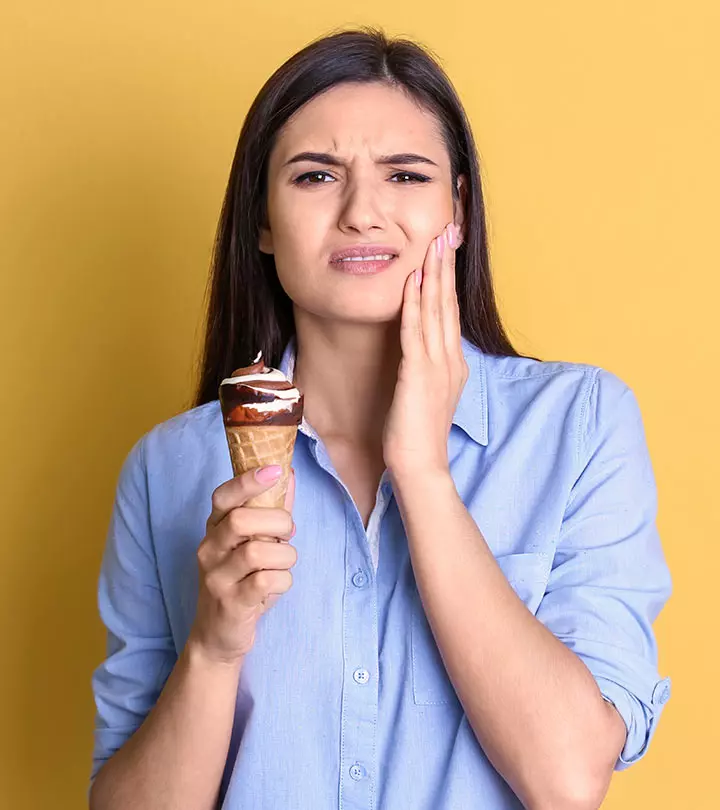





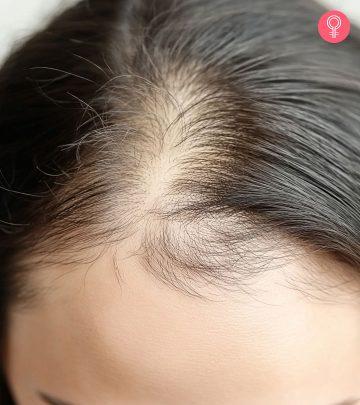


Community Experiences
Join the conversation and become a part of our empowering community! Share your stories, experiences, and insights to connect with other beauty, lifestyle, and health enthusiasts.